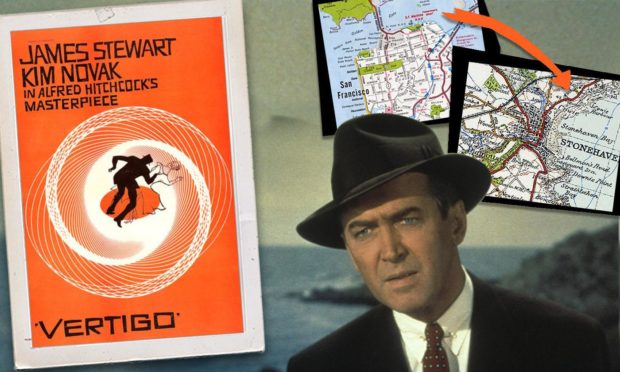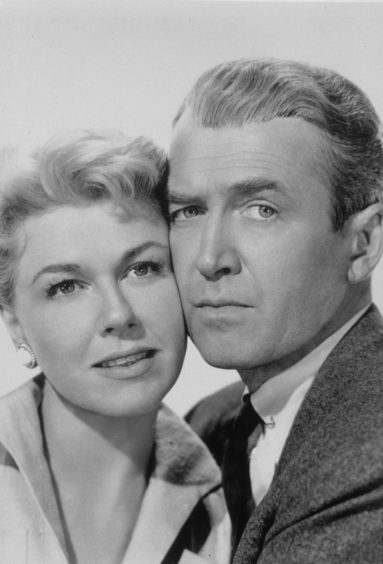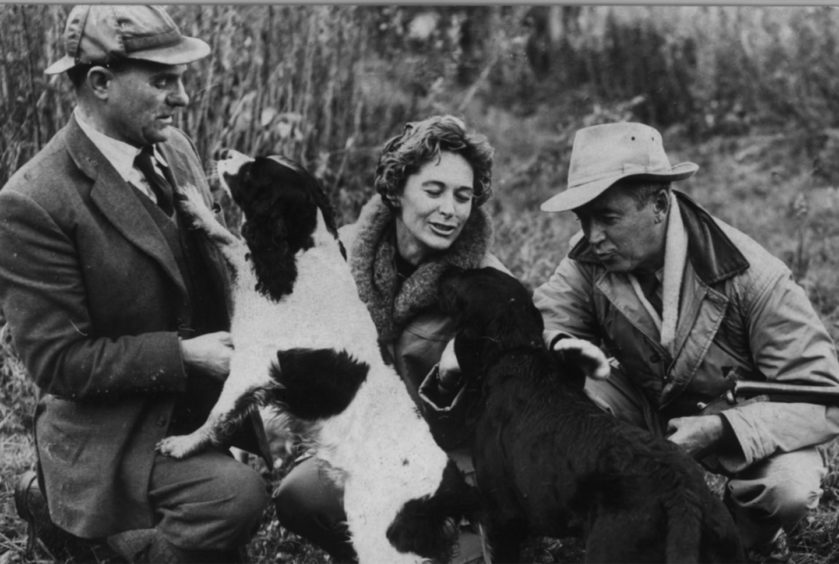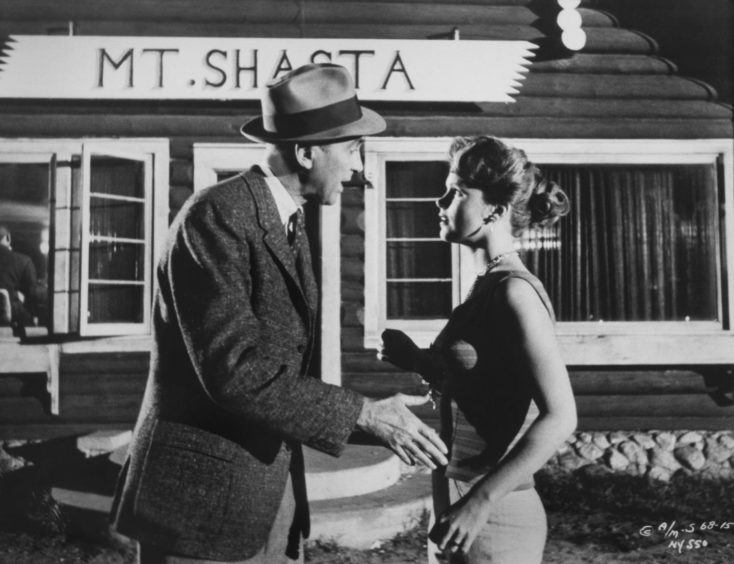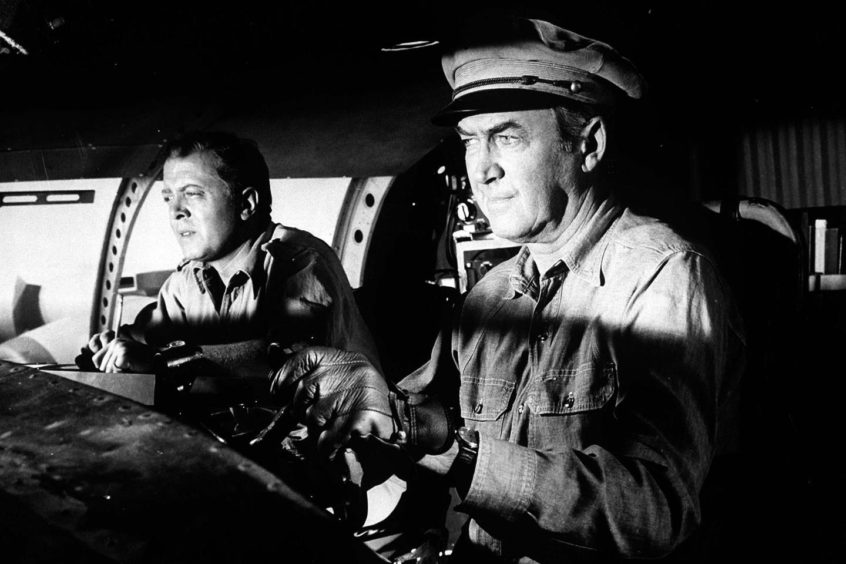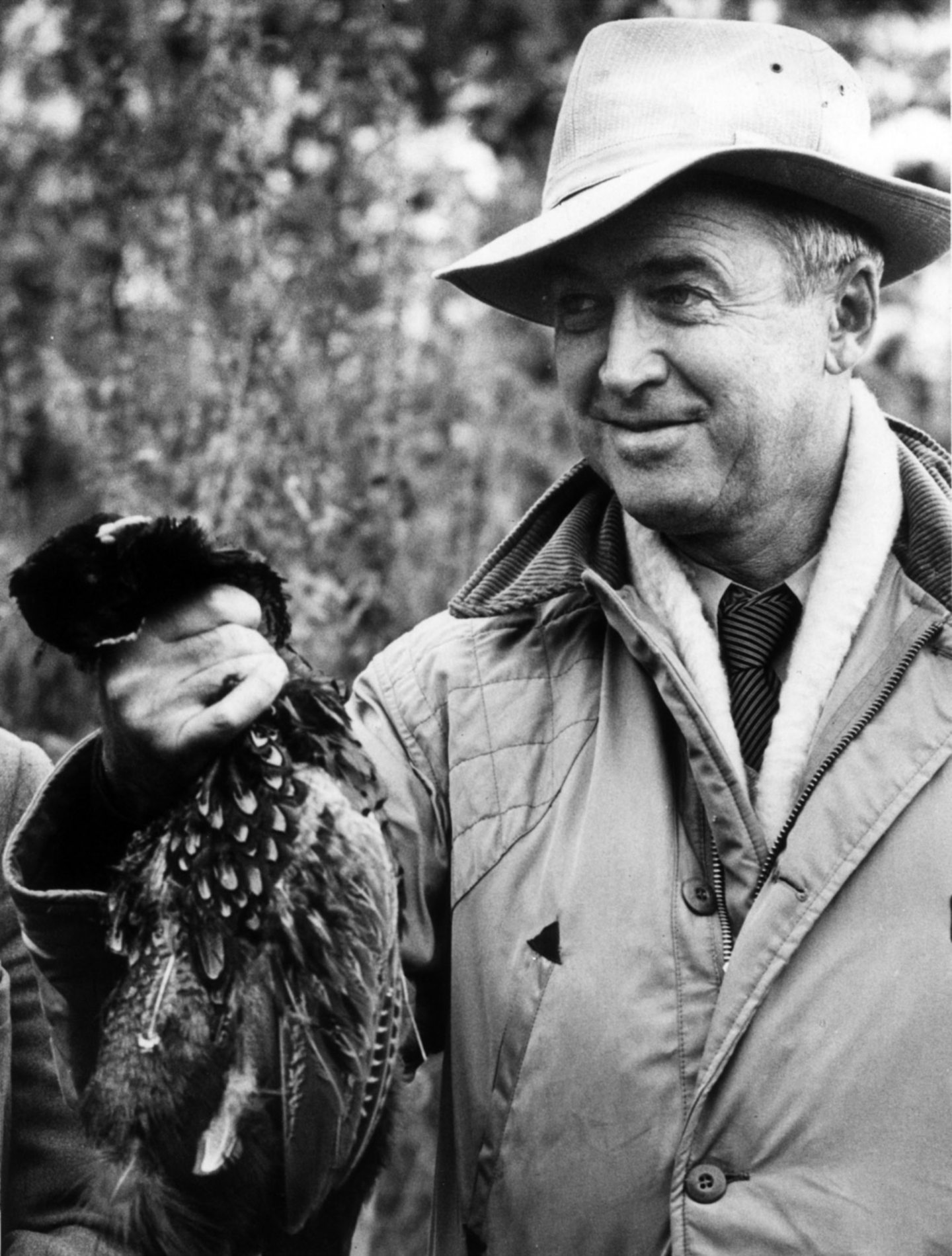The locals in Stonehaven did a double take as a dapper gent passed them on his way to the Bay Hotel in the summer of 1959.
Many of them felt they recognised the rugged countenance, the ramrod-straight gait and amiable smile of the middle-aged fellow in their midst, yet few could believe it was actually the chap they had watched in so many Hollywood films.
But, in the days ahead, a few of them gained the opportunity to meet James Stewart, the star of such classic movies as It’s A Wonderful Life, Mr Smith Goes To Washington, The Phildelphia Story, Harvey, The Greatest Show On Earth, The Man Who Knew Too Much, The Spirit Of St Louis, Rear Window and Vertigo.
The 51-year-old American of Ulster-Scots extraction made no secret of his passion for the north-east countryside and told his hosts he was in his element, whether shooting and fishing on Deeside or exploring such picturesque locations as Dunnottar Castle.
It was a welcome break for him after he had finished his involvement with the Otto Preminger film Anatomy Of A Murder, which subsequently gained glowing reviews.
But Stewart had other things on his mind when he turned up in Stonehaven.
He and his wife, Gloria, stayed at the Bay Hotel – now Clashfarquhar House – which was owned by Banchory solicitor Bill Emslie and his brother, George.
And the latter’s son, Bill, revealed that the Tinseltown legend had been the perfect guest during his 10-day stay in the coastal community, which also featured a variety of trips to rolling hills, grouse moors and a visit into Aberdeen.
He said, following the star’s death in 1997: “I have always had a soft spot for him and remember him as being a true gentleman who was always polite and generous.
“He loved to shoot and fish and he sometimes went out with the local fishing boats. I think that’s what attracted him to the area in the first place.”
While he was based at Stonehaven during his vacation in August 1959, Stewart spent a lot of time on the grouse moors of Fetteresso and Glenfarquhar.
And, as you might expect from somebody who had served with distinction during the Second World War – Stewart enlisted as a private in the Army Air Corps soon after the United States entered the conflict in 1941 and, after fighting in the European theatre, attained the rank of colonel – he was very comfortable with a gun in his hand.
Yet, there was no trace of the prima donna in the way he chatted with local residents and even agreed to do an interview with local journalist, Fred Stephen.
‘He was happy to talk to anybody he met’
The latter said: “He was just like he looked and sounded on film and he was so kind.
“I spoke to him in the lounge bar at the Bay Hotel and he was very open and friendly.
“He was pleased that people enjoyed his films and was happy to talk away.”
It had been a prolific 12 months for Stewart, given his lead roles in Anatomy Of A Murder and the wistful Bell Book And Candle, alongside Kim Novak and Jack Lemmon.
After returning to the United States, he was later involved in the creation of such Western classics as The Man Who Shot Liberty Valance and The Searchers, but there was still plenty to do before he finished his holiday in Stonehaven.
Hazel Stephen was among those who were granted the opportunity to meet the actor when he stopped to chat to the public amid his packed itinerary.
Although she moved to Perth in Australia, she has never forgotten her meeting with Stewart at Stonehaven railway station when she was just a 13-year-old schoolgirl.
She recalled: “A group of friends and I, after we had been to the Red Cross training, went up to the Bay Hotel, only to be told that James had gone to the station.
“We went up to the station and on to the platform. I saw James standing on his own so I went up to him and asked if he had enjoyed being in Stonehaven and he said he had.
“I then asked him if he would like to come back again and he said yes. I then asked him for his autograph, which he gave me and which I still have.
“He was very nice to me. His wife, Gloria, was sitting in the waiting room, beside the fire, as she was cold.
“I remember that night well and he was one of my favourite actors.”
More than 60 years later, the prized autograph is still in her family’s possession.
Stewart is probably most cherished for his role in the Christmas classic It’s A Wonderful Life, but he was nominated for a total of five Academy Awards during his career and won in the Best Actor category for The Philadelphia Story in 1941.
He was also the first major American movie star to enlist during the Second World War and was the recipient of the Distinguished Flying Cross for gallantry in battle.
By the time he travelled to Scotland, he was a global cinema icon, but he later told Michael Parkinson that he never took the craft too seriously and turned down roles in three Oscar-winning films: To Kill A Mockingbird, Network – which eventually went to Peter Finch – and On Golden Pond, which was picked up his friend Henry Fonda.
Once he had read his lines and completed his performance, he rarely dwelt on any one film and friends and colleagues described him as being like an absent-minded professor. Genial, courteous in company, and interested in other people’s lives.
That was certainly the impression he left on his audience in Stonehaven and elsewhere, even as the trip reached its conclusion.
He didn’t mind that heavy rain fell during one of his forays to the moors and laughed about the vagaries of the Scottish climate bringing four seasons in a couple of hours.
During their final day in the region, he and Gloria went on a shopping excursion to Aberdeen and enjoyed a drink in the Sportsman’s Club in the city before they were waved off on the night train to London by a large crowd at Stonehaven Station.
One of the throng, Jack Davidson, recalled in 1997: “I played in a local jazz band and we all loved swing music, so it was great to meet with the man who played Glenn Miller.
“He stood for some time at the station and signed a lot of autographs and when I told him that I had loved The Glenn Miller Story, he replied: ‘I was proud to take that role. It’s just a pity Glenn wasn’t around to see the results.’
When James Stewart died on July 2 1997, aged 89, the Press & Journal’s Norman Harper paid effusive tribute to his range and talent.
He said: “They call every ha’penny actor a star nowadays. Julia Roberts is a star. Brad Pitt is a star. Uma Thurman is a star. Keanu Reeves is a star.
“But they’re all a bucket of 40-watt bulbs compared to Jimmy Stewart who died this week.
“Anyone who wants to know how a star looks, behaves and acts should watch and savour any of Stewart’s 85 movies, from his debut in Art Trouble in 1934 to his last performance, as the voice of a cartoon sheriff (in An American Tail) in 1991.
“Especially watch him in Harvey, Vertigo or It’s A Wonderful Life and wallow in the professionalism of a man who understood more about acting for the camera and behaving with dignity off-screen than today’s puffed-up pouters will ever grasp.”
Many folk in Stonehaven will agree with him.
